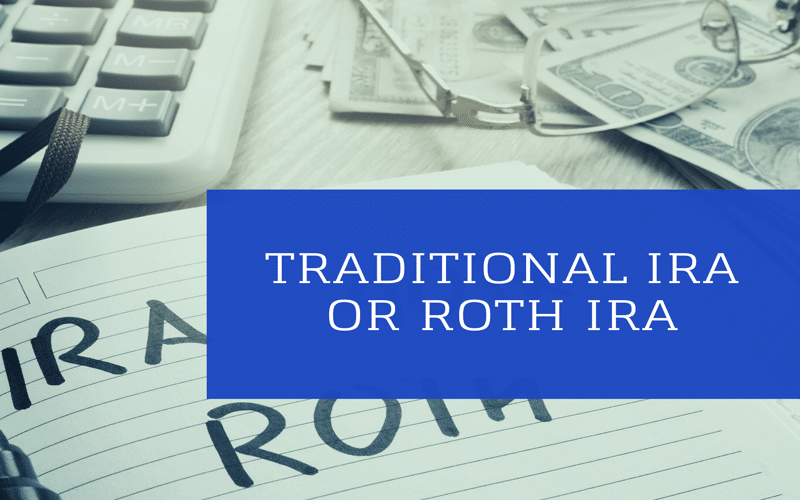IRAs or Individual retirement accounts are tax-advantaged tools that allow you to save and invest in the long run. These accounts build a nest egg for your post-career days. While there are different types of IRA, the two most popular ones include the traditional IRA and Roth IRA.
While the traditional IRA was established in 1974, the Roth IRA got introduced in 1997. Both these types of IRAs have several similarities, such as the tax-free growth of investments. However, they also differ in a few ways.
Here are some differences between the traditional IRA and Roth IRA to help you decide which one suits your needs.
Tax Breaks
Both Roth and traditional IRAs offer generous tax breaks. In traditional IRA, the contributions are tax-deductible on both federal and state tax returns for the year an individual contributes. Hence, withdrawals or distributions are taxed at the rate when you make them, presumably in retirement.
Generally, all contributions you make to traditional IRAs will lower your taxable income that lowers your AGI or adjusted gross income. That helps you qualify for various tax incentives such as the student loan interest deduction and child tax credit.
If you choose Roth IRA, you will not get a tax deduction when you contribute. Hence, they don’t’ lower your AGI that year. Consequently, your withdrawals in retirement are usually tax-free. In simple words, the Roth IRA is the opposite of the traditional IRA.
If you are eligible, you can fund and own both the IRAs. But the total deposits in all accounts should not go beyond the contribution limit for that tax year.
Income Limits
An individual younger than 70 ½ who has an earned income can make contributions to a traditional IRA. Your income and other factors decide if the contribution is tax-deductible. It also depends whether you or your spouse are covered by a plan such as a 401(k).
However, there are no age restrictions in Roth IRAs, but only income-eligibility restrictions.
For instance, single tax filers in 2019, could only contribute to a Roth IRA if they had a modified gross income of $137,000 or less. If you were to file jointly as a married couple, you must have modified AGIs of less than $203,000 for contributing to a Roth.
However, for the year 2020, single individuals must have a modified gross income of less than $139,000 and a modified AGI of $124,000. As for married couples, they should have modified AGIs of less than $206,000.
Distribution Rules
A major difference between the two IRAs is withdrawals. In the case of traditional IRAs, individuals must take RMDs or required minimum distributions the year when they turn 70. The IRS provides worksheets for calculating your yearly RMD based on the size of your account and your age.
However, in Roth IRAs, RMD’s do not apply during your lifetime, which means you don’t have to withdraw any funds at any age. That’s one of the reasons why Roth IRAs are the perfect wealth-transfer tools.
Pre-Retirement Withdrawals
When an individual withdraws money from a traditional IRA before he/she turns 59 ½, he/she has to pay a 10% early withdrawal penalty and taxes.
However, in certain circumstances, individuals can avoid the penalty. For instance, you can avoid paying the penalty when you in some specific cases: when you are paying for qualified higher-education expenses or qualified first-time home-buyer expenses. Moreover, certain levels of unreimbursed medical expenses and challenges such as a disability may also let you avoid the penalty, but you will have to pay taxes on the distribution.
On the contrary, in the case of Roth IRA, an individual can withdraw amounts that are equal to their contributions for any reason and time, tax-free.
Various rules apply when you withdraw earnings—amounts above the money you contributed—from the Roth. You can avoid the 10% early withdrawal penalty and taxes if you have had the Roth IRA for five years and comply with at least one of these conditions.
- You have a permanent disability
- You are 59 ½ years old
- The estate or your beneficiary withdraws money after you die
- You want to use the money for a first-time home purchase
However, you can still avoid the early withdrawal penalty, even when you have had the account for less than five years if:
- You are withdrawing due to financial hardships or a particular disability
- Your beneficiary or estate makes the withdrawal after your death
- You are at least 59 ½ years old
- You intend to use the money for qualified education expenses, medical costs, or a first-time home purchase
Now that you know the differences between the two types of IRAs, here is a general overview of their pros and cons.
Roth IRA
Pros
- Your savings grow tax-free
- There are no required minimum distributions
- You get tax diversification in retirement
Cons
- You have to pay taxes upfront
- The maximum contribution is low
- You must set it up yourself
- It has income limits
- Traditional IRA
Conventional IRA
Pros
- Tax-Deferred growth
- Deductible contributions
- Tax-sheltered growth
- Anyone can make contributions
- Bankruptcy protection
Cons
- Early withdrawal penalties
- Taxable distributions
- Lower contribution limits
- Limited investment types
- AGI limitation
Final Thoughts
There are several reasons why financial experts recommend a Roth IRA, the most popular ones being its estate planning benefits and never having to pay taxes on withdrawals. However, you must carefully weigh all pros and cons of both types of IRAs to make the best choice.








